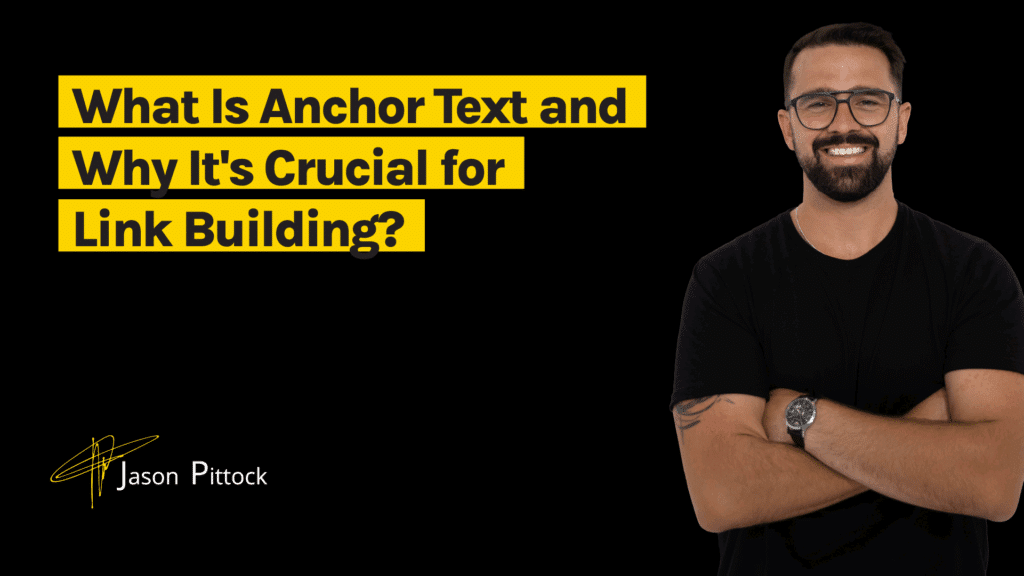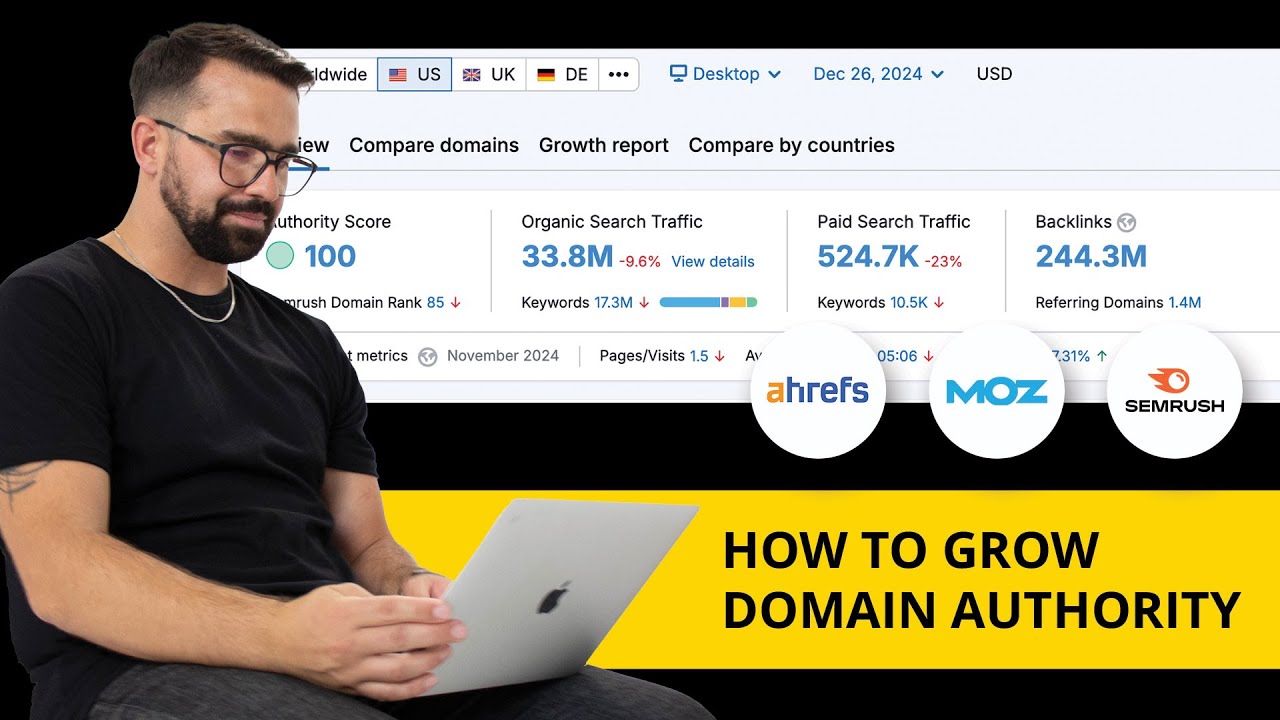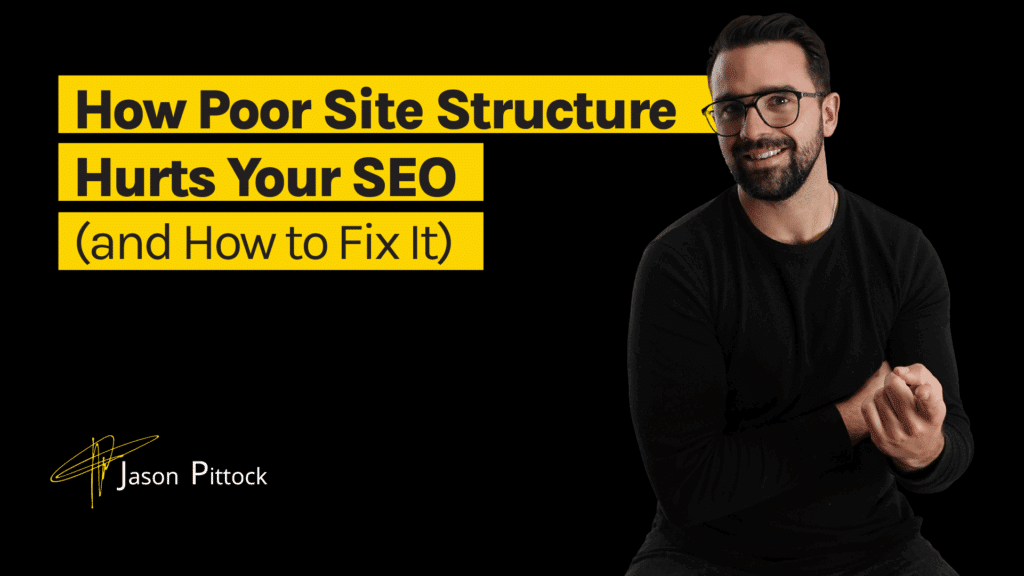Most websites are getting anchor text wrong. They’re either over-optimising with spammy keyword-stuffed links or playing it too safe with generic phrases like “click here.” Both approaches miss the mark. If you want your link-building strategy to actually move the needle, you need to understand how anchor text works and how to use it strategically. This article breaks down what is anchor text, why it matters for SEO, and how to use it without triggering penalties or confusing your audience.
What Is Anchor Text?
Anchor text is the clickable part of a hyperlink, what people see and click, and what search engines use to understand the context of the linked page. When it’s done well, it helps Google connect the dots between related content. When it’s sloppy or over-optimized, it creates noise and can drag down your rankings.
From an SEO standpoint, anchor text matters because it tells search engines what the linked page is about. If multiple authoritative sites link to your page using similar, relevant phrases, that reinforces your relevance for those topics. But if your anchor text looks forced, repetitive, or manipulative, it raises red flags. Google’s been cracking down on that kind of thing for years.
For users, anchor text improves clarity. It sets expectations. People want to know what they’re clicking into. If the link says how to improve onboarding retention and it takes them to a sales pitch, that’s a problem. Misleading or vague anchor text breaks trust, and once you lose that, it’s hard to recover. Precise, relevant anchor text? That builds credibility and helps conversions.
In short, anchor text isn’t just a formatting choice. It’s a ranking factor, a trust signal, and a conversion tool all rolled into one. Use it carelessly, and you weaken your entire link strategy. Use it well, and you build topical authority and better user flow.
The Different Types of Anchor Text You Need to Know
Not all anchor text is created equal. If you’re serious about link building, you need to know which types matter and how to use them without raising red flags.

- Exact Match: This is when the anchor text uses the exact target keyword. Example: free SEO tools linking to a page about that topic. It’s powerful but risky in excess. Overuse can trigger spam signals.
- Partial Match: A variation of the target keyword. Example: best SEO tools linking to the same page. It’s safer and still signals relevance.
- Branded: The name of your brand or site. Example: Jason Pittock linking to your homepage. It’s essential for trust and natural link profiles.
- Generic: Phrases like click here, this article, or learn more. They add variety but offer zero context for search engines. Use them sparingly.
- Naked URLs: Just the plain URL as the link. Example: www.jasonpittock.com. Not ideal for SEO, but can happen in directories or forums.
- Image Links: When an image is hyperlinked, the alt text acts as the anchor. Make sure it’s descriptive and relevant.
The key is balance. A natural backlink profile includes a mix of these types, with a strong focus on branded and partial match anchors.
Why It’s Important for Link Building
Anchor text directly influences how search engines and users perceive your links. It helps define the context of a backlink, which affects how much authority gets passed to the target page. Strong anchor text can improve rankings for specific keywords, drive qualified traffic, and reinforce topic relevance.
If all your backlinks say the same thing or scream “SEO trick,” that’s a problem. It signals manipulation and puts your site at risk. But if your link profile shows variety, relevance, and authority, you build trust, not just with Google, but with your audience too. Anchor text optimization isn’t just a small part of link building. It’s one of the signals that shapes your site’s visibility and authority over time. Get it right, and your entire strategy performs better.
How Search Engines Interpret and Evaluate Anchor Text
Google reads anchor text to figure out what your page is about and how it fits into a bigger topic. When a legit site links to you using a relevant phrase, that’s a signal. It tells search engines, “this content matters in this context.” And yes, that signal carries weight, especially if the linking site has authority.
But here’s where most people screw it up: they focus on keywords in anchor text like it’s 2010. Google doesn’t just count exact matches anymore. It looks at the full context: what’s on the page, what’s around the link, how natural the link feels, and whether the entire thing makes sense. You can’t just force a keyword into anchor text and expect results. That kind of lazy linking can backfire.
Anchor text needs to be strategic. Some links will have keywords. Some won’t. That’s normal. What matters is that every link makes sense for the user, for the topic, and for the way search engines evaluate relevance now. Treat anchor text like a tool, not a checkbox.
Best Practices for Writing Anchor Text That Helps Your SEO
Effective anchor text starts with clarity. Your goal is to use language that accurately describes the linked content while making it easy for both users and search engines to understand the context. It should feel like a natural part of the sentence, not something awkwardly inserted for SEO purposes.
Avoid relying on the same keyword repeatedly. Use a mix of anchor types to keep your link profile diverse and natural. If you’re linking to a guide about improving trial conversions, don’t always use SaaS trial conversion tips. Vary it with phrases like optimize your free trial or reduce churn during onboarding. This signals to search engines that the page is relevant for a range of related queries.
Also consider user behavior. Anchor text should help the reader decide if they want to click. Focus on intent and clarity, not just keyword density. Avoid long, bloated anchor text or anything that feels disconnected from the surrounding content. Best practices to follow:

- Use concise, descriptive phrases that reflect the linked content
- Keep the language natural and varied across pages
- Avoid over-optimization with exact match text
- Prioritize anchor text that aligns with search intent and adds value
- Make sure every link serves a clear purpose in the user journey
Done well, anchor text strengthens your content structure and builds a more intelligent linking system across your SaaS site.
Common Anchor Text Mistakes That Can Hurt Your Rankings
Many sites sabotage their SEO by misusing anchor text. One of the most common mistakes is keyword stuffing: repeating the same exact phrase in too many links. This looks unnatural to search engines and can trigger penalties, especially when done in backlinks. Another issue is overusing generic phrases like click here or read more. These add no value, fail to provide context, and waste an opportunity to improve topical relevance. Anchor text should always give both users and search engines a reason to care about the link.
Some teams also fall into the trap of linking too aggressively. Not every page needs to link to everything else. Overlinking within a paragraph or blog post dilutes the SEO value and overwhelms the reader.
Mistakes to avoid:
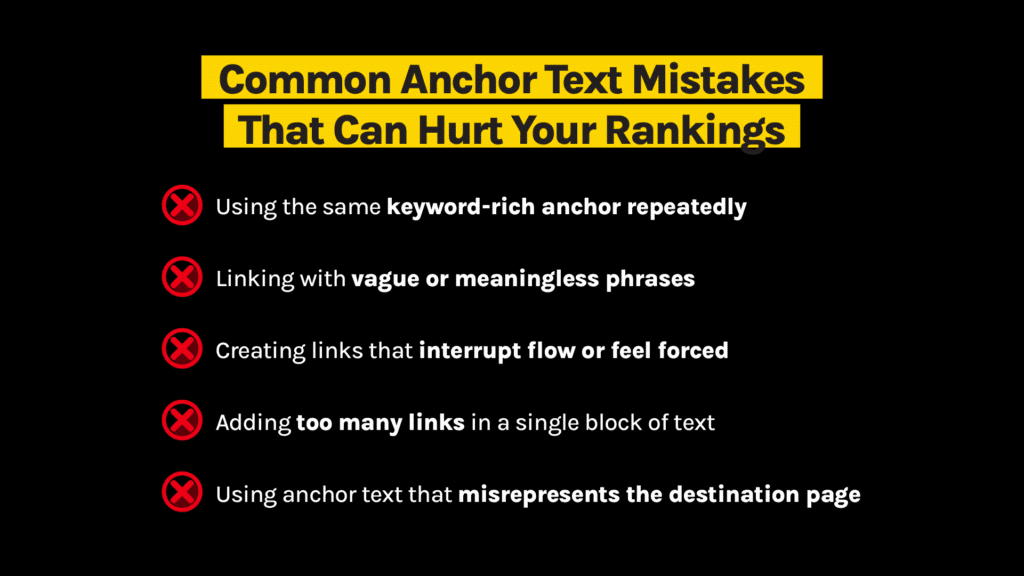
- Using the same keyword-rich anchor repeatedly
- Linking with vague or meaningless phrases
- Creating links that interrupt flow or feel forced
- Adding too many links in a single block of text
- Using anchor text that misrepresents the destination page
How to Use Anchor Text Effectively in Internal and External Links
Anchor text is one of the most underused assets in SEO and that’s a missed opportunity. Whether you're building internal links or earning backlinks, the words you choose matter. They shape how users move through your site and how Google evaluates your content. Lazy anchor text creates noise. Strategic anchor text builds clarity and authority.
When it comes to internal links, stop using vague calls to action like learn more or click here. That tells Google nothing. Your job is to guide users through your product, documentation, use cases, and content in a way that reinforces relevance. Use anchor text that actually describes the page. CRM integration features, SaaS onboarding best practices, API documentation aren’t just better for SEO, they make your site easier to navigate.
External links work the same way, but with higher stakes. Linking out is a trust signal. If you’re referencing data or research, don’t bury it under a generic phrase. Use anchor text that gives the reader — and Google — a reason to care. 2024 SaaS churn benchmarks says something. Click here says nothing. And if you’re still cramming exact-match keywords into every backlink, stop. That approach hasn’t worked for years. Use anchor text to provide context, not to game the algorithm.
Here’s what to keep in mind:
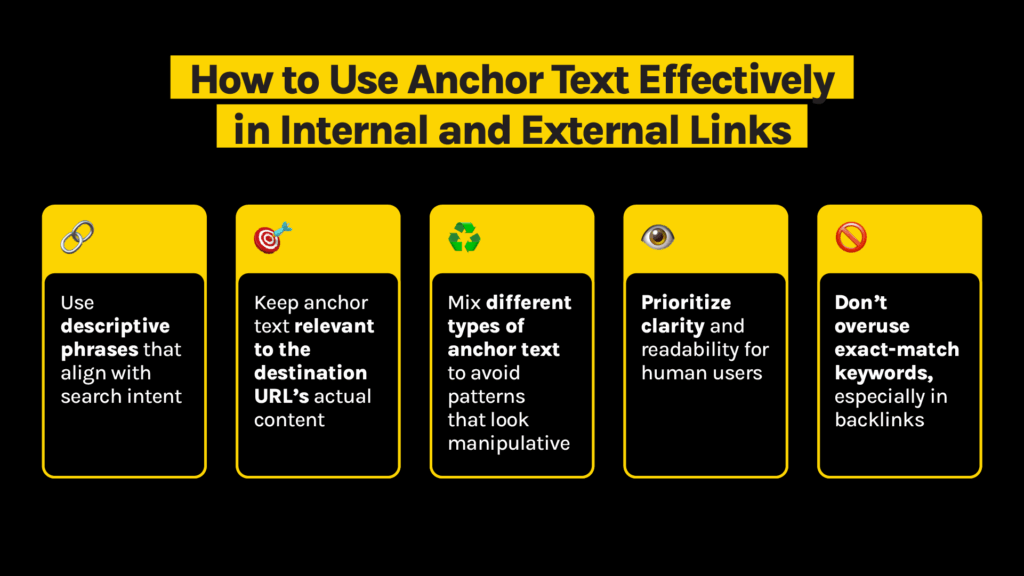
- Use descriptive phrases that align with search intent
- Keep anchor text relevant to the destination URL’s actual content
- Mix different types of anchor text to avoid patterns that look manipulative
- Prioritize clarity and readability for human users
- Don’t overuse exact-match keywords, especially in backlinks
A smart internal linking strategy built with strong anchor text helps search engines understand your site architecture and distributes authority to the right pages. Externally, well-crafted anchors support your thought leadership and improve the credibility of your content.
How Smarter Anchor Text Can Boost Your Link Strategy
Any company that wants to scale organic traffic needs to stop treating anchor text as an afterthought. When used strategically, it becomes a signal that drives relevance, improves topical authority, and supports every layer of your SEO plan. Smart anchor text helps search engines connect the dots between your core product pages, feature overviews, help docs, and blog content. It reinforces your positioning in the market by making it clear what you offer and who it's for. That leads to better rankings for high-intent queries and improved discoverability in niche segments.
It also improves user experience. Visitors are more likely to click a link when it clearly tells them what to expect. If your anchor text points users to relevant case studies, feature breakdowns, or tutorials, you’ll be guiding users through a frictionless journey that supports conversions.
Done right, anchor text acts as a multiplier. It aligns your SEO efforts with your content strategy, helps pages rank faster, and ensures you're not wasting crawl budget or user attention on dead-end links. In short, it's one of the simplest upgrades with the biggest upside.
